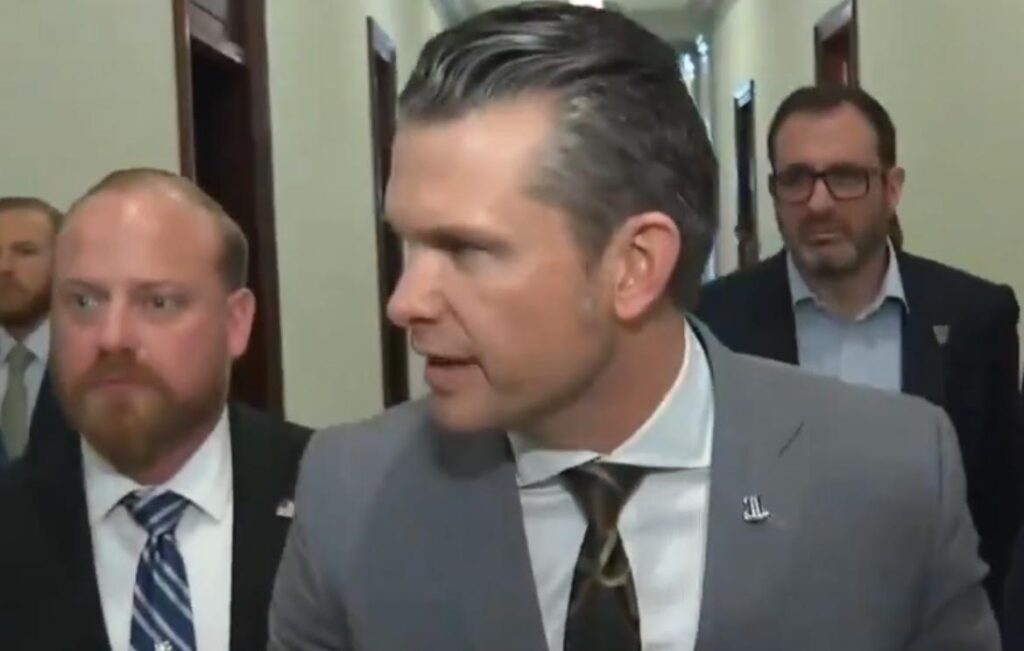Pete Hegseth, the nominee for Secretary of Defense under President-elect Donald Trump, recently found himself at the center of a media scrutiny during an encounter with a CNN reporter. The inquiry specifically revolved around his past criticisms of military policies related to LGBTQ+ individuals, particularly the “don’t ask, don’t tell” (DADT) policy that was enacted during Bill Clinton’s presidency. CNN highlighted that Hegseth has described the shift towards allowing openly gay individuals to serve as detrimental to military effectiveness, framing it as part of a broader “Marxist” agenda that values social justice over combat readiness. This assertion is based on Hegseth’s comments in his book, “The War on Warriors,” where he argues that such policies serve as a “gateway” for cultural changes that could compromise military cohesion.
During the press encounter, Hegseth faced a direct question about these views but chose not to engage with CNN’s framing. He firmly stated, “I don’t feel the need to respond to CNN,” showcasing his stance on selective engagement with particular media outlets that he perceives as biased. When pressed further by the reporter, Hegseth reiterated his dismissal of the question, emphasizing his disinterest in the narrative that CNN was presenting. This exchange reflects a growing trend among public figures to rebuff traditional media processes, particularly when they believe their words have been taken out of context or misrepresented.
The dynamic between Hegseth and the media serves as a notable case study in contemporary political communication, especially regarding contentious subjects like military inclusion policies. By refusing to engage with the narrative put forth by CNN, Hegseth not only attempts to control the discourse around his views but also appeals to a segment of the audience that is skeptical of mainstream media. His strategic avoidance of such questions suggests a broader strategy among political figures to navigate media scrutiny while reinforcing their core messages without offering up fodder for more extensive debate.
Hegseth’s reluctance to elaborate on his beliefs regarding LGBTQ+ policies in the military may stem from an understanding of the charged nature of these discussions. The public’s perception of military inclusivity has shifted considerably over the years, and Hegseth’s comments could potentially isolate him from more progressive viewpoints. However, by framing his stance as a defense of military integrity and combat efficacy, he attempts to resonate with those who prioritize traditional military values over social change.
As a prominent conservative voice, Hegseth’s rejection of CNN’s narratives could reflect the broader partisan divide in which media outlets are often viewed through a politically tinted lens. This divide complicates how policies related to military inclusivity are discussed and understood by the public, as competing narratives emerge to defend or criticize these policies. Hegseth’s handling of the encounter indicates an understanding of the importance of media relationships and how these interactions can influence public opinion, especially in the face of potentially unflattering coverage.
In summary, Pete Hegseth’s recent interaction with CNN illustrates a significant moment in the evolving relationship between political figures and the media. His refusal to address questions regarding his opposition to LGBTQ+ inclusion in the military not only underscores his strategy to avoid unfavorable portrayals but highlights the ongoing tensions within the public discourse surrounding military policies and social justice. This situation exemplifies the challenges faced by nominees in addressing contentious issues while maintaining their political agendas and public support.

